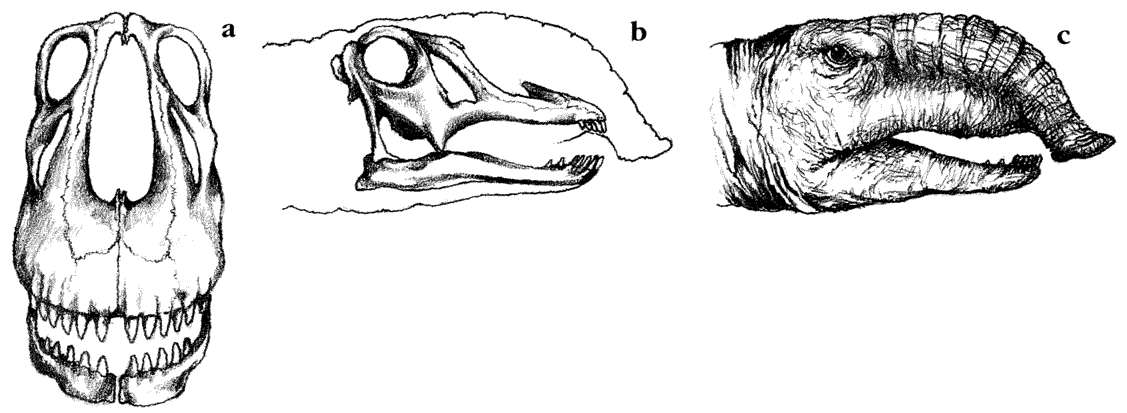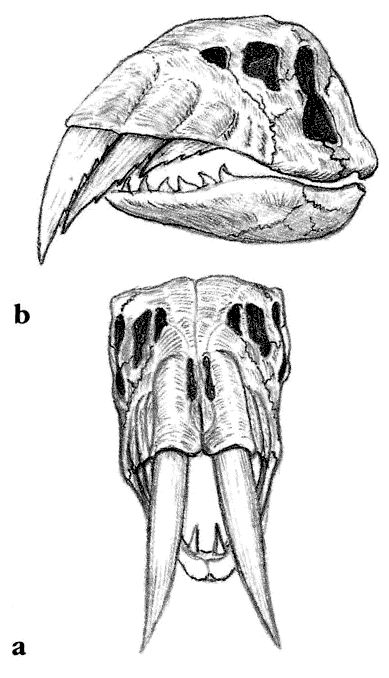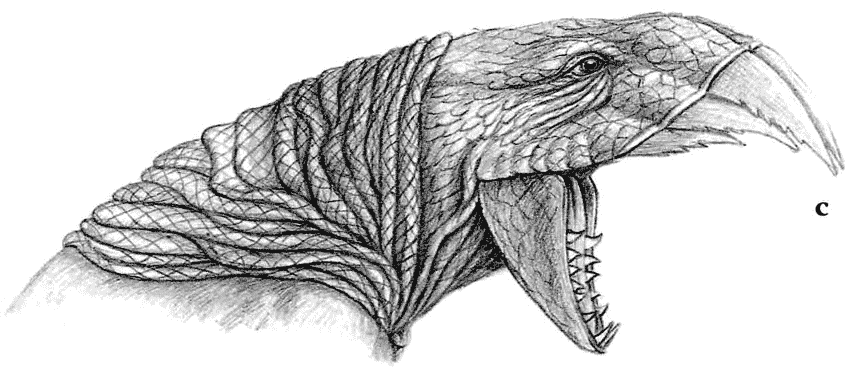THE NEOTROPICAL REALM
 The continent containing the Neotropical realm is almost an island,
connected to the Nearctic continent by only the narrowest necks of
land in the north-west. For 8,000 kilometres (5,000 m) the continent
stretches north-south, from the tropics of the northern hemisphere
almost to the Antarctic circle. At its widest it reaches 5,500 kilometres
(3,500 m) from coast to coast just south of the equator. The realm
also includes the northern land bridge last established about five
million years ago, and the southernmost tail of the Nearctic continent
proper. It is the barren desert conditions found here that define the
barrier between the two realms. In the very south a compact string
of islands connects the continent to the vast frozen continent that
lies over the south pole. This continent has so little life on it that
it does not constitute a zoogeographical realm. The continent containing the Neotropical realm is almost an island,
connected to the Nearctic continent by only the narrowest necks of
land in the north-west. For 8,000 kilometres (5,000 m) the continent
stretches north-south, from the tropics of the northern hemisphere
almost to the Antarctic circle. At its widest it reaches 5,500 kilometres
(3,500 m) from coast to coast just south of the equator. The realm
also includes the northern land bridge last established about five
million years ago, and the southernmost tail of the Nearctic continent
proper. It is the barren desert conditions found here that define the
barrier between the two realms. In the very south a compact string
of islands connects the continent to the vast frozen continent that
lies over the south pole. This continent has so little life on it that
it does not constitute a zoogeographical realm.
The Neotropical realm was once the western part of the supercontinent
Gondwana. This is obvious from the shape of the eastern coastline,
which follows the shape of the western coastline of the Ethiopian continent
exactly, showing where the two became separated in the middle Cretaceous
period. Its separation from the Nearctic continent in the north was
not so complete nor so final. Both the Neotropical and Nearctic continents
have been moving continuously towards the west, overriding the oceanic
plates there. The relative plate movements along the western coast
of the two continents has meant that there has been a continual steady
build-up of fold mountain chains and volcanoes along the western coasts.
This build-up has continued in the ill-defined region between the continents
as well, and over the millenia island chains and land bridges have
been created across the sea channel, and then destroyed again. At the
moment, the connection is present in the form of the land bridge in
the west and a loop of volcanic islands in the east.
As with the other continents, the physical geography reflects the geological
history. There are old mountains in the east, representing one edge
of the old rift-valley along which the Ethiopian continent tore away
during the Cretaceous period. Along the entire western coast there
is a new mountain range, constantly being enlarged by the reaction
between the continent and the plates of the nearby ocean. Volcanoes
bubble and stream along the length of this mountain range. The isthmus
that connects this continent to the Nearctic continent can be thought
of as the northward continuation of this range. Two main river basins
are found in the lowlands. The central one measuring 5,827,500 square
kilometres (2,250,000 sq m), represents the greatest river system in
the world.
Most of the northern reaches of the realm, being within the tropics,
are clothed in tropical rainforest. The huge river basin found in the
broadest section of the continent is feel by the daily rain that falls
here. As in most tropical forests, the favourable growing conditions
mean that thousands of species of trees grow here, supporting many
different kinds of tree-living animal, from the insects to the tree-living
dinosaurs that feed on them. The forest floor has its own fauna of
insects and insectivorous dinosaurs.
To the south, the largest areas of the lowlands are occupied by grasslands,
that range from tropical in the north through temperate and then cold
in the south. On these pampas live grass-eating animals – huge long-necked
grazing dinosaurs like those that have existed on the continent throughout
its life as an island realm. These dinosaurs are becoming rare and
even extinct now, and are being replaced by other creatures that are
evolving from animals that have migrated south from the Nearctic realm.
As the western mountains provide the land connection between the Neotropical
and the Nearctic realms, it is hardly surprising that many of the immigrants
to the realm have evolved from Nearctic mountain animals. Many of those
coming south have developed into forest-living and pampas-living types.
Some, however, have remained mountain creatures. Some of the largest
pterosaurs in the world soar above these wild mountain chains.
There are deserts here too. The grasslands in the very south are extremely
dry. They are in the rain-shadow zone of the mountains, where the prevailing
winds drop all their rain on the other side of the ranges. Coastal
deserts are found in a narrow strip between the mountains and the sea.
Here, the cold ocean currents cause the air to cool and descend so
that no rain falls. Further south on this coastal strip, however, there
are moister, more fertile conditions where the wet winds blowing from
the ocean have more influence on the climate than the cooling by the
ocean currents.
|







 The continent containing the Neotropical realm is almost an island,
connected to the Nearctic continent by only the narrowest necks of
land in the north-west. For 8,000 kilometres (5,000 m) the continent
stretches north-south, from the tropics of the northern hemisphere
almost to the Antarctic circle. At its widest it reaches 5,500 kilometres
(3,500 m) from coast to coast just south of the equator. The realm
also includes the northern land bridge last established about five
million years ago, and the southernmost tail of the Nearctic continent
proper. It is the barren desert conditions found here that define the
barrier between the two realms. In the very south a compact string
of islands connects the continent to the vast frozen continent that
lies over the south pole. This continent has so little life on it that
it does not constitute a zoogeographical realm.
The continent containing the Neotropical realm is almost an island,
connected to the Nearctic continent by only the narrowest necks of
land in the north-west. For 8,000 kilometres (5,000 m) the continent
stretches north-south, from the tropics of the northern hemisphere
almost to the Antarctic circle. At its widest it reaches 5,500 kilometres
(3,500 m) from coast to coast just south of the equator. The realm
also includes the northern land bridge last established about five
million years ago, and the southernmost tail of the Nearctic continent
proper. It is the barren desert conditions found here that define the
barrier between the two realms. In the very south a compact string
of islands connects the continent to the vast frozen continent that
lies over the south pole. This continent has so little life on it that
it does not constitute a zoogeographical realm. The evolution of the legs and tail of the watergulp mean
that it can move only in water. Its eyes and nostrils are high on
the head, allowing it to see above the water surface when submerged.
The mouth is broad, and the sharp-edged horny beak can cut through
the stems and leaves of the toughest water plants. At about 2.5 metres
(8 ft) long it is one of the largest river animals. Each watergulp
also supports a large colony of parasites and other companions that
feed on algae growing on its flanks, and on small creatures disturbed
from the mud by its passage.
The evolution of the legs and tail of the watergulp mean
that it can move only in water. Its eyes and nostrils are high on
the head, allowing it to see above the water surface when submerged.
The mouth is broad, and the sharp-edged horny beak can cut through
the stems and leaves of the toughest water plants. At about 2.5 metres
(8 ft) long it is one of the largest river animals. Each watergulp
also supports a large colony of parasites and other companions that
feed on algae growing on its flanks, and on small creatures disturbed
from the mud by its passage.












